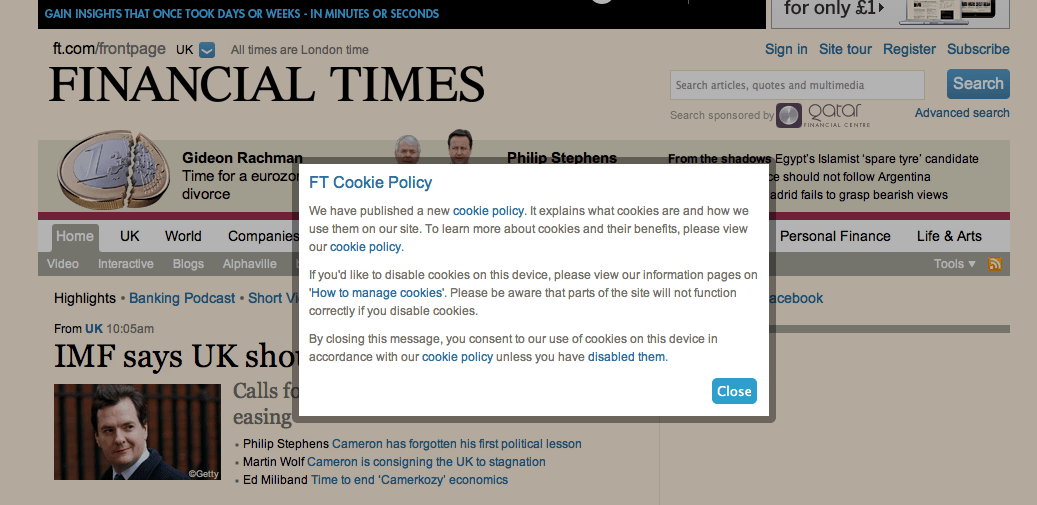In our personal lives, we’ve all heard the idiom “actions speak louder than words.” In our professional lives, when it comes to understanding our customers: actions speak louder than clicks.
How To Use Behavioral Marketing For Awesome Email Campaigns
A common fallacy is to think we can predict what our customers want by analyzing the content they consumed. By analyzing their behavior, we can be highly predictive of future decision-making regarding the purchase of products or services.
When you track your customer’s digital behavior, you can pinpoint where he is in the buying journey and what problems he might need solving. As McKinsey wrote in The Coming Era of On-Demand Marketing:
Online behavioral models built with Web traffic, search behavior, lifestyle data, and demographics are particularly effective at identifying prospects not found with traditional demographic prospecting models.
While we sometimes consider age and gender as a proxy for a specific interest, behavioral marketing provides a better measurement of online activity.
What is Behavioral Marketing
Simply put, behavioral marketing can help marketers engage with consumers who are more likely to make purchases. It takes into account a user’s web-browsing behavior such as pages visited or searches conducted to select advertisements to display.
Traditionally, marketers would target the demographics of segments when executing their marketing communications. Now, more marketers are starting to target audience behaviors.
How Does Behavioral Marketing Work?
Here’s how behavioral marketing works: an online publisher will put a piece of code on their site that places a cookie on a user’s browser. When searching the web, the user’s Internet activity is tracked. As the user clicks away from the site, data is collected on what they buy, what they read, and what they search for. The more time goes on, the more user Internet behavioral data is collected.
Here’s an example of a tracking disclaimer that gives users tracking options. Currently, this is a requirement in the UK.
Now it’s easy to understand how behavioral marketing is beneficial for serving digital ads, but it can also be applied to your email marketing strategy for subscribers on your site.
So let’s talk about it…
How Can Behavioral Marketing Benefit Your Email Campaigns
First, you must collect a subscriber’s website browsing history and incorporate the viewed content into the emails they receive. For instance, let’s say you were required to log into my blog before reading a post. Based on the content you consume, I will only send email information that mirrors your specific interests. For example, if I notice that you mostly like to view the infographics or spend more time reading posts about content marketing, I will be sure to highlight that content in all emails delivered to you.
Remember, without relevant and intriguing content, your readers will naturally get bored—and opt out of your email campaign. One way to overcome this is to develop an email marketing strategy that considers behavioral marketing data. In particular, capturing the behavior of your target audience and implementing that data into the emails you send them is key.
Here are some basic questions that behavioral marketing can answer:
- Which emails did a consumer open and click on?
- Which emails did she NOT open and click on?
- Which type of offer does she respond to most often?
- How long ago was her last interaction with an email -; three days, three weeks or three months?
- Who frequently responds, who rarely interacts?
Need more convincing?
MarketingSherpa research also shows that triggered emails and segmenting campaigns based on behaviors are the top tactics to improve email engagement.
Boom! Drops the mic.
Conclusion
Email marketing remains a relevant way to contact customers, but we must incorporate behavioral marketing to ensure success. Our customers are becoming more tech-savvy and, as a result, expect to receive highly relevant emails.
So, if you are still targeting subscribers with the same demographic data from last year, it’s time to make an update. By using behavioral marketing, you can craft more engaging messages that your readers look forward to receiving and reading.
Unfortunately, many email service providers (ESPs) only allow users to place subscribers in various list without having the ability to track behavioral information.
I currently use Mailchimp. Although I am happy with its services, I will soon look for another provider that enables more robust behavioral marketing functions.
If you are using a baseline email service provider, how are you segmenting your audience to tailor your email blasts? Are you currently utilizing behavioral marketing? If so, how?














